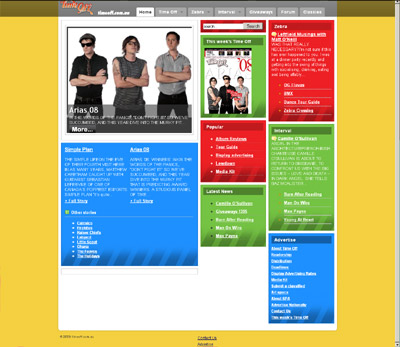Big Day Out Public Relations: Is Silence The Best Response?
A 17-year old girl died from a reported drug overdose at the Perth Big Day Out music festival earlier this month, after taking three ecstasy pills to avoid being caught by police at the gate. This was an unfortunate, but unsurprising occurrence.
The surprising element is how Big Day Out publicity have marginalised her behaviour by silencing their highly active online community.
A statement published on the BDO site on 2 February 2009 reads:
Perth drug overdose statement
Early yesterday afternoon a 17-year-old girl was taken to hospital after a suspected drug overdose at the Perth Big Day Out. Tragically she died overnight.
While details have yet to be confirmed, it has been reported that the teenager consumed a number of pills outside the event to avoid being detected by police sniffer dogs that were in operation, in this instance with fatal consequences.
Big Day Out does not condone the use of drugs at the event. The same laws of the outside world apply inside the event. Over 3 million people have attended the Big Day Out in its 17 year history and this is the first time an incident of this nature has occurred.
Sniffer dogs are commonly used outside large events like the Big Day Out and are part of the police’s harm minimisation responsibility.
The investigation is being followed up by the Police.
To respect the privacy of the family, no further comments will be made.
In contrary to that final statement, there’s also a dedication page on the BDO site, containing a message from the girl’s mother.
While the Big Day Out brand will remain untarnished by this event – it’s arguably stronger than ever – this sad occurrence is now inextricably linked to the event’s brand in the same manner as 16-year old Jessica Michalik‘s death during the 2001 tour.
Where Michalik’s death was the result of inadequate crowd control measures – a mistake rectified from the 2002 tour onwards – Thoms’ drug-related death requires a conversation between Big Day Out publicity and the hundreds of thousands who attend the tour across Australia and New Zealand each year.
Critically, the online community who follow the event have been silenced: the highly active Big Day Out forum was disabled immediately after the news of Thoms’ death broke, and it remains closed almost a month later.

http://forum.bigdayout.com/ as of 21 February 2009
Silence isn’t the best response here.
In this case, Big Day Out publicity invite criticism by refusing to allow a dialogue to occur.
The only publicised offshoot of Thoms’ death is a Western Australian police commissioner agreeing that “amnesty bins” should be installed outside music festivals, to allow punters to deposit their drugs without fear of prosecution. And to minimise the likelihood of festival attendees overdosing in a panic before entering the venue, as in Thoms’ case.
There’s nothing new about youth drug culture. But when an unfortunate event such as an overdose occurs, people start asking questions of the police, of the festival organisers, of each other.
In a time of crisis or confusion, people want to connect with each other. And while an isolated festival overdose isn’t the strongest catalyst for either impulse, it’s still an occasion better met with community encouragement than marginalisation; with noise instead of silence.
I understand that moderating public opinion becomes exponentially more difficult as a greater volume of people converge in one location. The need to consistently and accurately monitor the fine line between opinion and libel is likely at the forefront of the organisers’ swift decision to close the public forum.
Censorship aside, an alternative forum named Small Night In has sprung up following the closure. But many questions remain unanswered:
- Why silence an established, highly active online community following a drug-related death?
- Why not encourage a dialogue between festival attendees and festival organisers?
- Why not partner with an established organisation such as the Australian Drug Information Network (ADIN) and encourage participation – both online and in BDO-sponsored community forums held in capital cities – to gauge youth opinion on drug use, so as to minimise the chances of a repeat e?
- Most importantly: why not work harder to turn a negative event into a positive by reinforcing a sense of community?
Funnily, I was only provoked into thinking about the BDO organisers’ handling of the Thoms death after I received an email sent to the BDO user database advertising Lily Allen’s June Australian tour.
Promote a tour; marginalise the voices of Australian youths itching to converge and converse.
Poor form, Big Day Out.









